2023 to 2024 Departmental Sustainable Development Strategy Progress Report
Cat. No.: En104-24E-PDF
ISSN: 2817-3112
Unless otherwise specified, you may not reproduce materials in this publication, in whole or in part, for the purposes of commercial redistribution without prior written permission from the Impact Assessment Agency of Canada’s copyright administrator. To obtain permission to reproduce Government of Canada materials for commercial purposes, apply for Crown Copyright Clearance by contacting:
Impact Assessment Agency of Canada
160 Elgin Street, 22nd Floor
Ottawa ON K1A 0H3 Canada
Telephone: 613-957-0700
TTY: 1-866-582-1884
Fax: 613-957-0862
Email: information@iaac-aeic.gc.ca
© His Majesty the King in Right of Canada, as represented by the Minister of Environment and Climate Change, 2024.
On this page
- Section 1
- Section 2
- Commitments for The Impact Assessment Agency of Canada
- Goal 10: Advance Reconciliation with Indigenous Peoples and Take Action on Inequality
- Goal 12: Reduce Waste and Transition to Zero-Emission Vehicles
- Goal 13: Take Action on Climate Change and its Impacts
- Goal 16: Promote a Fair and Accessible Justice System, Enforce Environmental Laws, and Manage Impacts
- Commitments for The Impact Assessment Agency of Canada
- Section 3
Section 1
Introduction to the Departmental Sustainable Development Strategy
The 2022 to 2026 Federal Sustainable Development Strategy (FSDS) presents the Government of Canada’s sustainable development goals and targets, as required by the Federal Sustainable Development Act (the FSDA). This is the first FSDS to be framed using the 17 Sustainable Development Goals (SDGs) of the United Nations 2030 Agenda and provides a balanced view of the environmental, social, and economic dimensions of sustainable development.
In keeping with the purpose of the FSDA, to make decision-making related to sustainable development more transparent and accountable to Parliament, the Impact Assessment Agency of Canada (IAAC) supports the goals laid out in the FSDS through the activities described in IAAC’s 2023 to 2027 Departmental Sustainable Development Strategy (DSDS). This DSDS Progress Report presents IAAC’s results from 2023–24 to demonstrate its progress towards achieving its 2023 to 2027 DSDS commitments.
The FSDA also sets out seven principles that must be considered in the development of the FSDS as well as DSDS. These basic principles have been considered and incorporated in IAAC’s DSDS and 2023 to 2024 DSDS Progress Report.
To promote coordinated action on sustainable development across the Government of Canada, IAAC’s departmental strategy reports on Canada’s progress towards implementing the 2030 Agenda for Sustainable Development and advancing the SDGs, supported by the Global Indicator Framework (GIF) and Canadian Indicator Framework (CIF) targets and indicators. The departmental strategy also now captures progress on SDG initiatives that fall outside the scope of the FSDS.
Section 2
Commitments for The Impact Assessment Agency of Canada
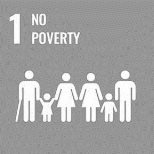
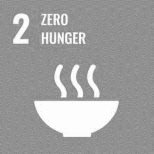
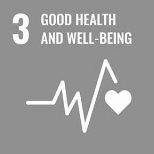
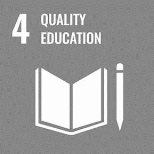
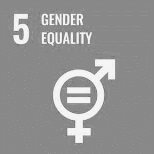
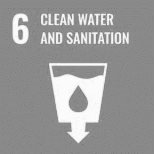
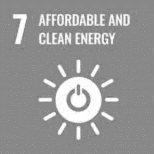
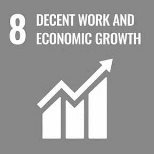
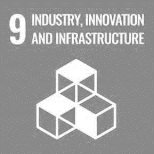
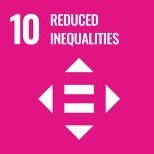
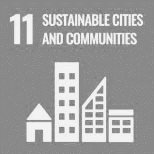
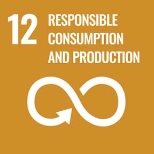
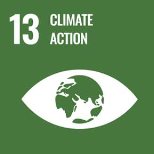
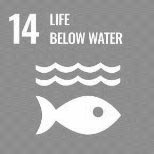
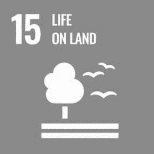
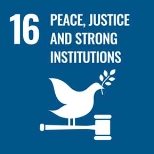
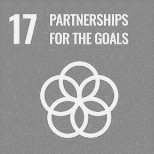
Goal 10: Advance Reconciliation with Indigenous Peoples and Take Action on Inequality
FSDS Context:
To support Goal 10, IAAC commits to “Advancing reconciliation with First Nations, Inuit and Métis Communities” through the implementation strategy to “co-manage natural resources, collaborate, and share benefits with Indigenous Peoples.”
As the Crown Consultation Coordinator for Indigenous consultations on designated projects under the Impact Assessment Act (IAA), IAAC is dedicated to implementing the commitments of the United Nations Declaration on the Rights of Indigenous Peoples Act and building on Canada’s constitutional obligations respecting Indigenous Peoples and rights.
The Truth and Reconciliation Commission Calls to Action inform IAAC’s work and its activities in support of the Government of Canada’s commitment to reconciliation with Indigenous Peoples. Through the implementation of the IAA and IAAC’s action-based Reconciliation Framework, IAAC seeks to develop meaningful partnerships with Indigenous Peoples across Canada and maximize Indigenous leadership in assessments, including supporting Indigenous groups in developing their own assessments.
In addition, IAAC collaborates with its Indigenous Advisory Committee, comprised of First Nations, Inuit, and Métis peoples who provide advice for the development of key policies and guidance to ensure that the unique rights, interests, and perspectives of Indigenous Peoples are acknowledged, affirmed, and implemented in impact assessment. Specifically, Indigenous groups are engaged in all phases of the impact assessment process to build relationships and enhance engagement with potentially impacted groups, including modern treaty nations. Moreover, respect for the relationships of Indigenous Peoples with the land, air, and water is affirmed by considering Indigenous Knowledge in assessment processes. Since this Knowledge draws on information and experience from traditional and current uses of land and resources, consideration of it throughout assessment processes results in stronger assessments and better project outcomes.
Target theme: Advancing reconciliation with First Nations, Inuit, and the Métis communities
Target: Between 2023 and 2026, and every year on an ongoing basis, develop and table annual progress reports on implementing the United Nations Declaration on the Rights of Indigenous Peoples Act (Minister of Justice and Attorney General of Canada)
The following table presents the results of the actions IAAC committed to undertake to support the FSDS target theme of “Advancing reconciliation with First Nations, Inuit, and the Métis communities.”
Implementation Strategy |
Departmental Action |
Performance Indicator Starting Point Target |
How the Departmental Action Contributes to the FSDS Goal and Target and, where applicable, to Canada’s 2030 Agenda National Strategy and SDGS |
Results Achieved |
|---|---|---|---|---|
Implement the United Nations Declaration on the Rights of Indigenous Peoples Act |
Advance work to co-develop regulations and policies that support the implementation of Indigenous co-administration agreements, including through a national engagement process with rights-holders Program: Indigenous Relations and Engagement |
Performance indicator: Percentage of Indigenous groups participating in the development of policy instruments, regulations and guidance documents that indicate the engagement was meaningful Starting point: To be determined in 2023–24 Target: 90% by March 31 of each fiscal year starting in 2024–25 |
Working towards agreements that could enable Indigenous governing bodies to take on certain powers, duties, or functions within the federal impact assessment process on specified lands will increase Indigenous leadership in IA and support equitable outcomes. Relevant targets or ambitions: CIF Ambition/Target: 10.1 Canadians live free of discrimination and inequalities are reduced CIF Indicator: None applicable GIF Target: 10.3 Ensure equal opportunity and reduce inequalities of outcomes, including by eliminating discriminatory laws, policies and practices and promoting appropriate legislation, policies, and action in this regard |
Indicator result: Not available in 2023–24 Notes: To date, surveys have not been conducted for engagement related to the development of policy instruments, regulations, and guidance documents. However, IAAC has developed an Indigenous Participation Series that provides Indigenous Peoples with an overview of the impact assessment process and how they can participate in an impact assessment. This series was presented as a pilot to several Indigenous Peoples to gather their detailed feedback on the training. Feedback from this pilot was incorporated into the updated version of the series and IAAC continues to gather feedback to ensure it meets the needs of Indigenous Peoples. Per the target set, IAAC will be prepared to start reporting on this indicator in 2024–25. |
Provide customized opportunities for Indigenous Peoples for sharing and gathering information (e.g., community meetings, workshops, technical meetings, focus groups, etc.) Program: Indigenous Relations and Engagement |
Performance indicator: Percentage of Indigenous groups participating in assessment-related engagement/ consultation activities who agree they were engaged meaningfully in the assessment process Starting point: To be determined in 2023–24 Target: 90% by March 31 of each fiscal year starting in 2024–25 |
Conducting consultation activities with Indigenous groups entails providing customized opportunities for sharing and gathering information in ways that ensure Indigenous groups feel heard and that their perspectives are meaningfully considered. Relevant targets or ambitions: CIF Ambition/Target: 10.1 Canadians live free of discrimination and inequalities are reduced CIF Indicator: None applicable GIF Target: 10.2 By 2030, empower and promote the social, economic, and political inclusion of all, irrespective of age, sex, disability, race, ethnicity, origin, religion or economic or other status |
Indicator result: Not available in 2023–24 Notes: This was a new indicator and, in 2023–24, the approach for collecting feedback was identified. The approach to collecting feedback from Indigenous Peoples will be implemented in 2024–25. |
|
Collaborate with Indigenous groups in the assessment of designated projects to identify and consider potential impacts on their rights throughout the assessment process, including the decision-making phase Program: Indigenous Relations and Engagement |
Performance indicator: Percentage of Indigenous groups who agree that mitigation measures set out in decision statements effectively respect and protect the rights of Indigenous Peoples Starting point: Baseline to be established in 2023–24 Target: Positive trend over time from 2023–24 to 2026–27 |
Incorporating comments on potential conditions received from Indigenous groups into the potential conditions recommended for the Minister to integrate into the decision statement promotes respect for, and protection of, Indigenous rights. Relevant targets or ambitions: CIF Ambition/Target: 10.1 Canadians live free of discrimination and inequalities are reduced CIF Indicator: None applicable GIF Target: 10.3 Ensure equal opportunity and reduce inequalities of outcomes, including by eliminating discriminatory laws, policies and practices and promoting appropriate legislation, policies, and action in this regard |
Indicator result: Not available in 2023–24 Notes: This was a new indicator, and in 2023–24, the approach for collecting feedback was identified. The approach for collecting feedback from Indigenous Peoples will be implemented in 2024–25. |
Implementation strategies supporting the goal
This section presents the results achieved for implementation strategies that support the goal “Advance reconciliation with Indigenous Peoples and take action on inequality” but not a specific FSDS target.
Implementation Strategy |
Departmental Action |
Performance Indicator Starting Point Target |
How the Departmental Action Contributes to the FSDS Goal and Target and, where applicable, to Canada’s 2030 Agenda National Strategy and SDGS |
Results Achieved |
|---|---|---|---|---|
Co-manage natural resources, collaborate, and share benefits with Indigenous Peoples |
Ensure that Indigenous perspectives, concerns, and knowledge are considered in assessment-related decision-making Program: Indigenous Relations and Engagement |
Performance indicator: Percentage of assessment reports provided to decision-makers that include how Indigenous Knowledge and perspectives were considered Starting point: To be determined in 2023–24 Target: 100% by March 31 of each fiscal year starting in 2024–25 |
Incorporating Indigenous perspectives into decision-making ensures that decision-makers are provided with the best possible advice and information on environmental, health, social, and economic effects to mitigate adverse impacts of designated projects. It also demonstrates the co-management of natural resources with Indigenous Peoples. Relevant targets or ambitions: CIF Ambition/Target: 10.1 Canadians live free of discrimination and inequalities are reduced CIF Indicator: None applicable GIF Target: 10.3 Ensure equal opportunity and reduce inequalities of outcomes, including by eliminating discriminatory laws, policies and practices and promoting appropriate legislation, policies, and action in this regard |
Indicator result: Not available in 2023–24 Notes: Indicator results are available only for Cedar LNG Project assessment, the sole IAA project that reached the decision phase, which occurred during the 2022–23 reporting period. The Impact Assessment Report for this project was submitted within that period. |
Develop Indigenous Engagement and Partnership Plans, which are intended to reflect the participation objectives of identified Indigenous groups, engagement opportunities at each phase of the assessment process, and methods of engagement that align with the needs of communities Program: Indigenous Relations and Engagement |
Performance indicator: Percentage of Indigenous groups who agree the Indigenous Engagement and Partnership Plan incorporates how they want to work with IAAC on the assessment Starting point: To be determined in 2023–24 Target: To be determined based on data collected in 2023–24 |
Developing Indigenous Engagement and Partnership Plans collaboratively with Indigenous groups that may be affected by a proposed project ensures that IAAC engages and consults with the appropriate Indigenous Peoples, which provides them with the opportunity to inform IAAC as to how they would like to participate and how they will work with the Agency throughout the impact assessment process. Relevant targets or ambitions: CIF Ambition/Target: Canadians live free of discrimination and inequalities are reduced CIF Indicator: None applicable GIF Target: 10.3 Ensure equal opportunity and reduce inequalities of outcome, including by eliminating discriminatory laws, policies and practices and promoting appropriate legislation, policies, and action in this regard |
Indicator result: 100% in 2023–24 Notes: Indigenous engagement & partnership plans are developed for designated projects where IAAC determined that an IA is required. These plans are developed during the planning phase, in consultation with the Indigenous groups that will be consulted in the project assessment. They are finalized and posted on the Canadian Impact Assessment Registry at the start of the individual project assessment and apply to the entire assessment process. The 2023–24 result becomes the starting point and the target has been set as 100%. |
|
Partner and collaborate with Indigenous groups to build their confidence in the assessment process Program: Indigenous Relations and Engagement |
Performance indicator: Percentage of Indigenous groups involved in assessments indicating they had sufficient opportunities to work in partnership/ collaboratively in assessment processes Starting point: To be determined in 2023–24 Target: 60% by March 31 of each fiscal year starting in 2024–25 |
Building confidence among Indigenous groups in the transparency of and certainty about the assessment process, through engagement and collaboration, enables Indigenous groups to play a meaningful role in all or part of project assessments and supports trust to share Indigenous Knowledge to inform assessment-related decisions. This also enables Indigenous groups to co-manage projects with IAAC and share their benefits. Relevant targets or ambitions: CIF Ambition/Target: Canadians live free of discrimination and inequalities are reduced CIF Indicator: None applicable GIF Target: 10.3 Ensure equal opportunity and reduce inequalities of outcome, including by eliminating discriminatory laws, policies and practices and promoting appropriate legislation, policies, and action in this regard |
Indicator result: Not available in 2023–24 Notes: This was a new indicator, and in 2023–24, the approach for collecting feedback was identified. The approach for collecting feedback from Indigenous Peoples will be implemented in 2024–25. |
Goal 12: Reduce Waste and Transition to Zero-Emission Vehicles
FSDS Context:
To support Goal 12, IAAC contributes to the FSDS target theme “Federal Leadership on Responsible Consumption” through the implementation strategy to “strengthen green procurement criteria.”
IAAC adheres to the Government of Canada’s Policy on Green Procurement, with the commitments of the Greening Government Strategy integrated into its own procurement processes. These processes provide incentives for suppliers to adopt a science-based target in line with the Paris Agreement and disclose their greenhouse gas emissions and environmental performance information.
To ensure awareness and inclusion of green considerations in procurement activities, IAAC provides training to executives, managers, and supervisors, as well as specialists in procurement and materiel management functions. This green procurement training supports sustainable purchases by acquisition cardholders and requirements for procurement processes.
Target theme: Federal Leadership on Responsible Consumption
Target: The Government of Canada’s procurement of goods and services will be net-zero emissions by 2050, to aid the transition to a net-zero, circular economy (All Ministers)
Implementation Strategy |
Departmental Action |
Performance Indicator Starting Point Target |
How the Departmental Action Contributes to the FSDS Goal and Target and, where applicable, to Canada’s 2030 Agenda National Strategy and SDGS |
Results Achieved |
|---|---|---|---|---|
Strengthen green procurement criteria |
Incorporate environmental considerations into procurement management processes and controls Program: Internal Services |
Performance indicator: Percentage of IAAC’s procurement processes* that include environmental considerations and criteria * This refers to sole source or competitive processes that do not use Public Services and Procurement Canada’s Standing Offers or Supply Arrangements. Starting point: 90% in 2022–23 Target: 95% by March 31 of each fiscal year starting in 2023–24 (and continued improvement onward; the remaining 5% is out of IAAC’s control) |
Procurement processes use established Public Services and Procurement Canada mandatory commodity tools that incorporate environmental considerations. In addition, as part of its procurement strategy, IAAC requires all competitive or non-procurement processes to include environmental considerations. Inclusion of these considerations contributes to reduced environmental impacts and motivates suppliers to reduce the environmental impact of their supply chain. Relevant targets or ambitions: CIF Ambition/Target: 12.2 Canadians consume in a sustainable manner. CIF Indicator: 12.2.1 Proportion of businesses that adopted selected environmental protection activities and management practices GIF Target: 12.7 Promote public procurement practices that are sustainable, in accordance with national policies and priorities |
Indicator result: 96% in 2023–24 Notes: IAAC has met and exceeded its target of 95% for 2023–24 with respect to procurement processes that include environmental considerations and criteria. IAAC will continue to seek improvements to its procurement processes, by increasing the number of its procurement specialists who are trained in green procurement functions. |
Ensure executives, managers and supervisors, and specialists in procurement and materiel management functions have received green procurement training Program: Internal Services |
Performance indicator: Percentage of executives, managers and supervisors, and specialists in procurement and materiel management functions who have completed green procurement training Starting point: To be determined in 2024–25 Target: 100% by March 31, 2026 |
Providing training for executives, managers and supervisors, and specialists in procurement and materiel management functions encourages increased acquisition of environmentally preferable goods and services, and ensures environmental considerations are incorporated into purchasing decisions. It is also expected to motivate suppliers to green their goods, services, and supply chain. Relevant targets or ambitions: CIF Ambition/Target: 12.2 Canadians consume in a sustainable manner CIF Indicator: 12.2.1 Proportion of businesses that adopted selected environmental protection activities and management practices GIF Target: 12.7 Promote public procurement practices that are sustainable, in accordance with national policies and priorities |
Indicator result: 20% in 2023–24 Notes: The overall result of 20% includes 11% of executives, 23% of managers and supervisors, and 66% of specialists in procurement and materiel management functions who have completed the CSPS Green Procurement course. To increase completion rates, in 2024–25, green procurement training was added to the mandatory training list for employees. Completion will be monitored twice a year as part of the regular monitoring of mandatory training at IAAC. |
Goal 13: Take Action on Climate Change and its Impacts
FSDS Context:
To support Goal 13, IAAC contributes to the target theme “Federal Leadership on Greenhouse Gas Emissions Reductions and Climate Resilience” through its implementation strategies related to travel and materiel management.
IAAC promotes the reduction of business travel in support of Government of Canada commitment to achieving net-zero emissions, and purchases carbon offsets to compensate for emissions resulting from any travel necessary for operational requirements to meet legislated responsibilities.
In its day-to-day operations, IAAC is continuing its commitment to reduce and reuse office equipment (including computers) and furniture, as well as to assess associated lifecycle costs and environmental impacts. IAAC is developing its internal capacity to support ongoing sustainable operations.
Target theme: Climate Change Mitigation and Adaption
Target: Achieve 40 to 45% greenhouse gas emission reductions below 2005 levels by 2030, and achieve net-zero greenhouse gas emissions by 2050 (Minister of Environment and Climate Change supported by all other Ministers)
Implementation Strategy |
Departmental Action |
Performance Indicator Starting Point Target |
How the Departmental Action Contributes to the FSDS Goal and Target and, where applicable, to Canada’s 2030 Agenda National Strategy and SDGS |
Results Achieved |
|---|---|---|---|---|
Continue to implement Canada’s climate plans and actions |
Reducing and reusing materials and factoring in lifecycle costs in procurement are environmental considerations (e.g., end-of-life disposal) taken into account through the Government of Canada’s Policy on Green Procurement and implemented across IAAC Program: Internal Services |
Performance indicator: Percentage of materials* reduced or reused per year using the appropriate method (e.g., GC Surplus and Computers for Schools) *Furniture items (bookshelves, storage cabinets, tables, chairs, ergonomic desks, and keyboard trays) and IT hardware (laptops, monitors, and mobile phones) Starting point: To be determined in 2023–24 Target: Target to be set in 2024–25 based on data from 2023–24 |
Implementing the Policy on Green Procurement is expected to result in more environmentally responsible planning, acquisition, use, and disposal practices across the organization. Relevant targets or ambitions: CIF Ambition/Target: 13.1 Canadians reduce their greenhouse gas emissions. CIF Indicator: 13.1.1 Greenhouse gas emissions GIF Target: 13.2 Integrate climate change measures into national policies, strategies, and planning |
Indicator result: Not available in 2023–24 Notes: This was a new indicator in 2023–24, and a data tracking method is under development. As a result, it is not possible to identify a percentage of materials reduced or reused. In 2023–24, IAAC sent 35 monitors to Computers for Schools, as well as repurposed its office couches for use by employees and guests in a Parks Canada welcome lounge. A starting point for this indicator will be determined in 2024–25. |
Implement the Canadian Net-Zero Emissions Accountability Act |
Requiring proponents in all Tailored Impact Statement Guidelines* to submit plans to achieve net-zero by 2050. *The Impact Statement must include a credible plan that describes the mitigation measures that will be taken to minimize greenhouse gas emissions throughout all phases of the project and achieve net-zero by 2050. Program: Assessment Administration, Conduct, and Monitoring |
Performance indicator: Number of impact assessments for which a net-zero plan is provided by the proponent Starting point: To be determined in 2023–24 Target: 100% for assessments conducted under the Impact Assessment Act (IAA) by March 31, 2027 and ongoing |
This requirement would advance Canada’s goals of becoming net-zero by 2050 by demonstrating effective action on climate change and minimizing greenhouse gas emissions. This requirement could also support emerging markets such as renewable energy and clean technology. Relevant targets or ambitions: CIF Ambition/Target: 13.1 Canadians reduce their greenhouse gas emissions CIF Indicator: 13.1.1 Greenhouse gas emissions GIF Target: 13.2 Integrate climate change measures into national policies, strategies and planning |
Indicator result: Not available in 2023–24 Notes: This information is contained in impact statements as part of the impact assessment process. No impact statements were submitted in 2023–24. Following the Supreme Court of Canada (SCC) decision in October 2023 and the coming into force the amended IAA in June 2024, this indicator is no longer applicable and will be removed through forthcoming updates to IAAC’s 2023 to 2027 DSDS. |
Target theme: Federal Leadership on Greenhouse Gas Emissions Reductions and Climate Resilience
Target: The Government of Canada will transition to net-zero carbon operations for facilities and conventional fleets by 2050 (All Ministers)
Implementation Strategy |
Departmental Action |
Performance Indicator Starting Point Target |
How the Departmental Action Contributes to the FSDS Goal and Target and, where applicable, to Canada’s 2030 Agenda National Strategy and SDGS |
Results Achieved |
|---|---|---|---|---|
Implement the Greening Government Strategy through measures that reduce greenhouse gas emissions, improve climate resilience, and green the government’s overall operations |
Support Agency-wide contributions toward net-zero emissions (i.e., the carbon-neutral by 2050 objective) by promoting the reduction of business travel for public servants and non-public servants, encouraging the use of online facilitation where feasible, developing a hybrid work environment (online and in-person), and hosting virtual engagement sessions and meetings Program: Internal Services |
Performance indicator: Percentage reduction in business travel for public servants and non-public servants Starting point: 2.5% of the operating budget in 2019–20 (pre-covid-19 level) Target: 2% in operating budget by March 31, 2024 with continued reductions to be identified thereafter |
Reducing business travel and promoting online engagement sessions and meetings reduce greenhouse gas emissions from travel and enhance sustainable consumption. Relevant targets or ambitions: CIF Ambition/Target: 13.1 Canadians reduce their greenhouse gas emissions. CIF Indicator: 13.1.1 Greenhouse gas emissions GIF Target: 13.3 Improve education, awareness-raising and human and institutional capacity on climate change mitigation, adaptation, impact reduction and early warning |
Indicator result: 1.29% of IAAC’s operating budget was expended on travel in 2023–24 Notes: IAAC aims to reduce travel and put into place controls for overall expenditures for the 2024–25 operating budget. |
Where travel is necessary for operational requirements, purchase offset carbon emissions caused by discretionary business travel by Agency employees to mitigate IAAC’s negative impact on the environment Program: Internal Services |
Performance indicator: Ratio of carbon offsets purchased in relation to business travel for Agency employees* *Contractors will be added at future date, once a methodology is determined for contractors. Starting point: 90% for 2022–23 (Agency employees only) Target: 95% by 2024–2025 and 100% by 2025–26 |
Each time Agency staff travel, their emissions are calculated and then “offset” by an equivalent compensatory investment into clean and renewable energy projects, including safe drinking water, wind energy, solar power, recycling, and composting. This initiative mitigates IAAC’s carbon emissions and lessens its environmental footprint. Relevant targets or ambitions: CIF Ambition/Target: 13.1 Canadians reduce their greenhouse gas emissions. CIF Indicator: 13.1.1 Greenhouse gas emissions GIF Target: 13.2 Integrate climate change measures into national policies, strategies, and planning |
Indicator result: 100% in 2023–24 Notes: IAAC purchased carbon offsets for all employee travel airfare in 2023–24. |
Goal 16: Promote a Fair and Accessible Justice System, Enforce Environmental Laws, and Manage Impacts
FSDS Context:
To support Goal 16, IAAC commits to making progress on the Theme “Compliance with environmental laws and high-quality impact assessments” through a range of implementation strategies, as described in the table below.
By delivering high-quality impact assessments, IAAC ensures the Minister of Environment and Climate Change, or the Governor in Council, has the required evidence and Indigenous Knowledge to make informed decisions about major natural resource and infrastructure projects within federal jurisdiction.
IAAC incorporates expert advice and comments from a Circle of Experts, which includes First Nations, Métis, and Inuit individuals, National Indigenous Organizations, as well as IAAC’s Indigenous Advisory Committee, to advance co-development of a discussion paper about Indigenous co-administration agreements. This advice will inform next steps in the development of regulatory and policy initiatives in this space.
Throughout the assessment process, IAAC proactively seeks Indigenous, public, and stakeholder input, with an emphasis on considering Indigenous Knowledge and perspectives alongside western science. IAAC has developed internal guidance and tools specific to the application, management and protection of Indigenous Knowledge received through assessment processes. In addition, IAAC provides funding to Indigenous Peoples and the public to facilitate meaningful participation in assessments.
Further, to increase transparency in the federal assessment process, IAAC publishes project records and assessment data on the Canadian Impact Assessment Registry (the Registry). This Registry also enables Indigenous Peoples and the public to submit input through the Registry, thereby providing an additional way to participate in public consultation periods held throughout assessment processes.
Target theme: Compliance with Environmental Laws and High-Quality Impact Assessments
Implementation strategies supporting the goal
This section presents the results achieved for implementation strategies that support the goal “Promote a fair and accessible justice system, enforce environmental laws, and manage impacts” but not a specific FSDS target.
Implementation Strategy |
Departmental Action |
Performance Indicator Starting Point Target |
How the Departmental Action Contributes to the FSDS Goal and Target and, where applicable, to Canada’s 2030 Agenda National Strategy and SDGS |
Results Achieved |
|---|---|---|---|---|
Foster research to support high-quality impact assessments |
Support research related to impact assessments through IAAC’s Research Program, including partnering with individual researchers and organizations to expand the impact assessment research community and encourage the dissemination of research related to impact assessment Program: Assessment Administration, Conduct, and Monitoring |
Performance indicator: Percentage of stakeholders that are aware of new research who indicate that the research has expanded their knowledge base related to assessments Starting point: To be determined in 2024–25 Target: 70% by March 31, 2029 and every five fiscal years thereafter |
IAAC’s Research Program is designed to further the practice of assessments by providing funding to researchers or subject matter experts to produce research that supports high-quality assessments, establishes research networks, and builds partnerships. Funding and contract recipients produce research that is accessible to impact assessment practitioners within IAAC as well as the public. This increases the knowledge base related to assessment and informs IAAC guidance and operational documents that support the conduct of high-quality assessments. Relevant targets or ambitions: CIF Ambition/Target: 16.7 Canadians are supported by effective, accountable, and transparent institutions CIF Indicator: 16.7.1 Proportion of the population with high levels of confidence in selected institutions GIF Target: 16.10 Ensure public access to information and protect fundamental freedoms, in accordance with national legislation and international agreements |
Indicator result: Not available in 2023–24 Notes: This was a new indicator with the development of the 2023 to 2027 DSDS in 2023–24, and data will only be available starting in 2024–25. |
Implement monitoring, inspection, and enforcement activities |
Conduct inspections of designated projects to verify compliance with the Impact Assessment Act (IAA) and decision statements issued under it. Program: Assessment Administration, Conduct, and Monitoring |
Performance indicator: Percentage of active projects that have been inspected, overall, and by type of inspection (onsite, offsite) Starting point: To be determined in 2023–24 Target: 100% by March 31 of each fiscal year starting in 2024–25 |
Conducting onsite and offsite inspections includes responding to complaints, as well as reviewing reports, implementation schedules, and plans submitted by the proponent to IAAC. These activities encourage, promote, and verify compliance with the IAA, Decision Statements, and regulations, and help IAAC determine appropriate responses to situations involving non-compliance. Relevant targets or ambitions: CIF Ambition/Target: 16.7 Canadians are supported by effective, accountable, and transparent institutions CIF Indicator: 16.7.1 Proportion of the population with high levels of confidence in selected institutions GIF Target: 16.6 Develop effective, accountable, and transparent institutions at all levels |
Indicator result: 100% of active projects were inspected in 2023–24.
Notes: An “Active Project” is a project that was in construction prior to April 1, 2023. The Interim Administration Period of the Impact Assessment Act (IAA) in response to the Supreme Court of Canada’s decision on the constitutionality of the IAA, affected onsite inspection numbers; they were lower than planned for 2023–24. As committed to in the 2023 to 2027 DSDS, this becomes the new starting point for this indicator, which will be compared to future years to enable reporting on this indicator. IAAC conducted 47 inspections on 15 active projects. This includes 18 onsite and 29 offsite inspections for these 15 projects (multiple inspections may be conducted for the same project). Onsite inspections were conducted at 13 out of 15 active projects, and offsite inspections were conducted at 10 out of 15 active projects. |
Review project-specific follow-up programs to verify the accuracy of predictions made in project assessments, determine the effectiveness of mitigation measures, identify whether unanticipated effects are occurring, and facilitate suitable responses to emerging issues through monitoring committees and adaptive management Program: Assessment Administration, Conduct, and Monitoring |
Performance indicator: Percentage of follow-up programs of designated projects that proceed for which follow-up results submitted to IAAC indicate that mitigation measures have a high or moderate effectiveness status Starting point: To be determined in 2024–25 Target: 90% by March 31 of each fiscal year starting in 2025–26 |
Determining the effectiveness of a mitigation measure through a follow-up program helps eliminate, reduce, or control the potential adverse effects of a designated project and provides measures to adaptively manage any damage to the environment through replacement, restoration, compensation, or other means Relevant targets or ambitions: CIF Ambition/Target: 16.7 Canadians are supported by effective, accountable, and transparent institutions CIF Indicator: 16.7.1 Proportion of the population with high levels of confidence in selected institutions GIF Target: 16.6 Develop effective, accountable, and transparent institutions at all levels |
Indicator result: Not available in 2023–24 Notes: This was a new indicator with the development of the 2023 to 2027 DSDS in 2023–24, and data will only be available starting in 2024–25. |
|
Meaningfully consult and accommodate Indigenous Peoples and consider Indigenous Knowledge in impact assessment and regulatory processes |
Deliver the Indigenous Capacity Support Program, providing funding to Indigenous groups and Indigenous organizations to support the development of local and regional Indigenous impact assessment knowledge and capacity. This knowledge and capacity will ensure Indigenous Peoples can more effectively participate in or lead some or all a project’s assessment. It also provides the knowledge and capacity for them to participate in regional assessment processes, policy engagement, and other activities related to the IAA. Program: Indigenous Relations and Engagement |
Performance indicator: Percentage of Indigenous Capacity Support Program partners who indicate that the eligible activities provided sufficient knowledge and skills to the Indigenous groups to enable them to engage in the assessment process Starting point: To be determined in 2024–25 Target: 80% by March 31 of each fiscal year starting in 2025–26 |
Providing funding to support the development of impact or regional assessment knowledge and capacity of Indigenous groups helps to improve IAAC’s relationship with Indigenous Peoples. Throughout assessment processes, IAAC engages and consults with Indigenous Peoples to assess potential adverse effects of projects, identify the concerns of Indigenous Peoples, and incorporate these concerns into all phases of federal assessments. Building their capacity through the Indigenous Capacity Support Program ensures they have the knowledge, skills, and abilities to provide input into assessments and policy development processes. This will help empower Indigenous Peoples to play a meaningful role in all or part of project assessments. Relevant targets or ambitions: CIF Ambition/Target: 16.7 Canadians are supported by effective, accountable, and transparent institutions CIF Indicator: 16.7.1 Proportion of the population with high levels of confidence in selected institutions GIF Target: 16.7 Ensure responsive, inclusive, participatory, and representative decision-making at all levels |
Indicator result: Not available in 2023–24 Notes: This was a new indicator in 2023–24 and data will only be available starting in 2024–25, which is when the approach to collecting feedback from Indigenous Peoples is only expected to be implemented in 2024–25. |
Provide the public and Indigenous Peoples with a voice in impact assessment and regulatory processes |
Deliver the Participant Funding Program, providing funding to support Indigenous Peoples and the public to facilitate their participation in assessment processes (including project, regional, and strategic assessments). Funding support is provided to Indigenous Peoples and members of the public who can provide relevant knowledge or expertise and value-added information related to a project, or who have a direct local interest, community, or Indigenous Knowledge and interest in the project’s impact on treaty lands, settlement lands or traditional territories or related claims and rights. Program: Assessment Administration, Conduct, and Monitoring |
Performance indicator: Percentage of Indigenous Peoples receiving Participant Funding Program funding that indicate their participation in the assessment process was meaningful Starting point: To be determined in 2024–25 Target: 90% by March 31 of each fiscal year starting in 2025–26 |
Supporting the participation of Indigenous Peoples and the public in federal assessment processes through the Participant Funding Program contributes to an open and balanced assessment process that strengthens the quality and credibility of federal assessments. By having better access to information from Indigenous Peoples and the public through consultation and engagement sessions, Indigenous Peoples and the public can participate in the assessment process in a manner that is meaningful to both IAAC and the recipients. Supporting this participation through funding helps reduce any financial barriers that could limit the ability of Indigenous Peoples or the public to participate in these engagement and consultation sessions. Relevant targets or ambitions: CIF Ambition/Target: 16.7 Canadians are supported by effective, accountable, and transparent institutions CIF Indicator: 16.7.1 Proportion of the population with high levels of confidence in selected institutions GIF Target: 16.7 Ensure responsive, inclusive, participatory, and representative decision-making at all levels |
Indicator result: Not available in 2023–24 Notes: This was a new indicator in 2023–24 and data will only be available starting in 2024–25, which is when the approach to collecting feedback from Indigenous Peoples is only expected to be implemented in 2024–25. |
Deliver the Policy Dialogue Program, providing funding to stakeholders (individuals and not-for-profit organizations), Indigenous organizations, and Indigenous groups to support them in providing external advice to IAAC and participating in the development of policies, methodologies, tools, and practices related to federal impact assessment, regional assessment, and strategic assessment. Program: Assessment Administration, Conduct, and Monitoring |
Performance indicator: Percentage of stakeholders and Indigenous groups receiving Policy Dialogue Program funding that indicate that the collaboration and engagement opportunities provided them with the ability to provide advice and feedback Starting point: To be determined in 2024–25 Target: 75% by March 31 of each fiscal year starting in 2025–26 |
The Policy Dialogue Program is designed to make assessment policies, guidelines, tools, practices, and assessments more effective through Indigenous, stakeholder and Advisory Committee engagement. The Program aims to foster meaningful participation in policy development by capturing and considering the information provided by Indigenous Peoples and stakeholders. Relevant targets or ambitions: CIF Ambition/Target: 16.7 Canadians are supported by effective, accountable, and transparent institutions CIF Indicator: 16.7.1 Proportion of the population with high levels of confidence in selected institutions GIF Target: 16.7 Ensure responsive, inclusive, participatory, and representative decision-making at all levels |
Indicator result: Not available in 2023–24 Notes: This was a new indicator in 2023–24 and data will only be available starting in 2024–25. |
|
Support fair, transparent and predictable impact assessment, and regulatory processes |
Prepare the Tailored Impact Statement Guidelines to guide the proponent’s preparation of the Impact Statement and the focus of the impact assessment. Program: Assessment Administration, Conduct, and Monitoring |
Performance indicator: Percentage of stakeholders and Indigenous groups indicating that the Tailored Impact Statement Guidelines were effectively tailored to increase the efficiency and effectiveness of the project assessment Starting point: To be determined in 2023–24 Target: 70% by March 31 of each fiscal year starting in 2024–25 |
Indigenous Peoples, lifecycle regulators, jurisdictions, federal authorities, and the public inform the Tailored Impact Statement Guidelines Template through consultations and engagements. These Guidelines then set out a comprehensive list of requirements specific to the individual project assessment that the proponent must follow to complete a detailed Impact Statement. The proponent’s Impact Statement must describe the project’s contribution to sustainability by considering how to maximize the overall positive benefits, and minimize the potential adverse effects, of the designated project. Relevant targets or ambitions: CIF Ambition/Target: 16.7 Canadians are supported by effective, accountable, and transparent institutions CIF Indicator: 16.7.1 Proportion of the population with high levels of confidence in selected institutions GIF Target: 16.6 Develop effective, accountable, and transparent institutions at all levels |
Indicator result: Not available in 2023–24 Notes: Results for this indicator are not yet available as the data analysis is only expected to be implemented in 2024–25. IAAC supports the development of Tailored Impact Statement Guidelines, which ensure federal requirements are captured and consider comments from Indigenous groups, public, federal authorities and provincial ministries, and the proponent. IAAC sought comments through consultation meetings, public information sessions and invitations to submit written comments. IAAC considered all comments received and focused the Tailored Impact Statement Guidelines on the areas of the effects within federal jurisdiction. |
Administer and maintain the Canadian Impact Assessment Registry (the Registry), including managing the online public engagement feature of the Registry. Program: Assessment Administration, Conduct, and Monitoring |
Performance indicator: Percentage/amount of time Registry users can access the Registry in a timely manner* *The Registry is designed to be available on the internet 24/7. It is available on demand or upon request to enable users to participate meaningfully in the impact assessment process. Starting point: 99% in 2022–23 Target: 100% by March 31 of each fiscal year starting in 2023–24 |
Ensuring public access to scientific and other impact assessment information in the Registry increases the transparency and accessibility of information received and generated throughout the assessment process. Making information available increases the understanding of Indigenous Peoples and the public and provides another way to participate in the assessment process. Relevant targets or ambitions: CIF Ambition/Target: 16.7 Canadians are supported by effective, accountable, and transparent institutions CIF Indicator: 16.7.1 Proportion of the population with high levels of confidence in selected institutions GIF Target: 16.6 Develop effective, accountable, and transparent institutions at all levels |
Indicator result: 99.6% in 2023–24 Notes: In 2023–24, the Registry was unavailable due to website outages for 34.5 hours. |
|
Consider the perspectives, input, and information received from Indigenous Peoples and the public when identifying issues, assessing impacts, identifying mitigation measures to limit the potential adverse effects of the project, and decision-making. Program: Assessment Administration, Conduct, and Monitoring |
Performance indicator: Percentage of stakeholders and Indigenous groups participating in assessments who report a high level of confidence in the transparency of the assessment process Starting point: To be determined in 2023–24 Target: 70% by March 31 of each fiscal year starting in 2024–25 |
Providing opportunities for Indigenous Peoples and the public to participate in assessment processes ensures that their input, views, and perspectives are available to inform all phases of the assessment process. This leads to better-informed assessment outcomes and contributes to improved confidence in the assessment process. Relevant targets or ambitions: CIF Ambition/Target: 16.7 Canadians are supported by effective, accountable, and transparent institutions CIF Indicator: 16.7.1 Proportion of the population with high levels of confidence in selected institutions GIF Target: 16.6 Develop effective, accountable and transparent institutions at all levels |
Indicator result: 89% of stakeholders in 2023–24 Notes: Results from 2023–24 do not include Indigenous groups because the approach to collecting feedback from Indigenous Peoples is only expected to be implemented in 2024–25. |
Section 3
Integrating Sustainable Development
IAAC will continue to ensure that its decision-making process includes consideration of FSDS goals and targets through its Strategic Environmental Assessment (SEA) process. A SEA for a policy, plan or program proposal includes an analysis of the impacts of the given proposal on the environment, including on relevant FSDS goals and targets.
Public statements on the results of IAAC’s assessments are released when an initiative has undergone a detailed SEA. The purpose of the public statement is to demonstrate that the environmental effects, including the impacts on achieving the FSDS goals and targets, of the approved policy, plan or program have been considered during proposal development and decision making. IAAC did not complete any detailed SEAs in 2023–24.
As Section 2 shows, IAAC contributes to the sustainability objectives of the Government of Canada by delivering its mandate to implement the IAA. High-quality environmental and impact assessment processes and operations support forward thinking and encourage the use of innovative approaches and technologies, which contributes to Canada’s competitiveness in the natural resources sector.
IAAC’s processes for implementing the IAA foster public trust in government decision-making by requiring that a rationale for decisions be provided, and scientific evidence and Indigenous Knowledge be publicly available for all assessments. It makes this information accessible to Canadians on an ongoing basis for all assessment through the Registry, which increases the transparency of assessment processes and project decisions. In 2023–24, information was published to the Registry for over 1,200 assessments, including project assessments, regional assessments, strategic assessments, and assessments on Federal Lands and Outside of Canada.
As part of its daily operations, IAAC is committed to considering FSDS goals and targets in its internal processes. It continues to increase its use of virtual tools for engagement and consultation sessions, and purchases carbon offsets when there is no alternative to business travel. Where offices are updated, landfills are avoided as much as possible by reusing, repurposing, or recycling computer equipment and office furniture, which also results in financial savings. A tangible example of this effort was the repurposing of office couches in 2023–24 for use by employees and guests in a Parks Canada welcome lounge. IAAC also continues to build awareness for and deliver mandatory training to employees who have decision-making responsibilities about how to better support greening government strategies in their work (e.g., in the purchase of supplies and services).
Within IAAC, internal information sessions for employees raise awareness about emerging sustainable development issues, studies, and initiatives. IAAC continues to engage employees through initiatives, such as an in-office battery drive and sharing “green tips” on its intranet. In its external communications, IAAC continues to inform Canadians about federal assessment processes (including project, regional, and strategic assessments) and how these assessment processes protect the environment, advance Indigenous reconciliation, and support growing Canada’s economy.